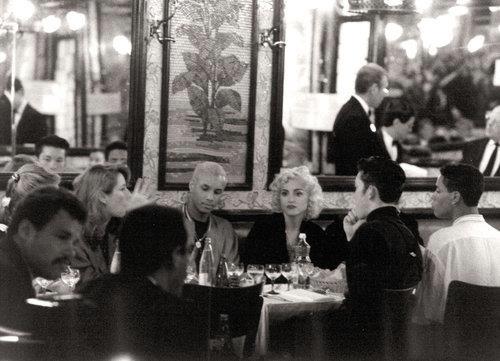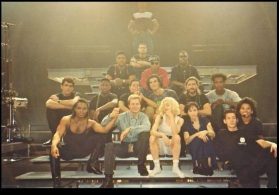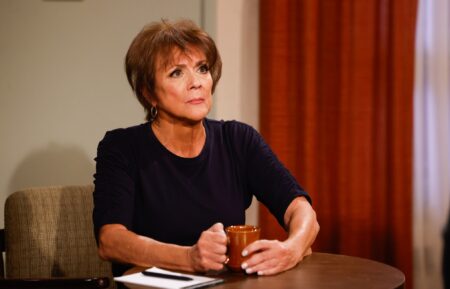‘Strike A Pose’ Doc Catches Up With Madonna’s Former Dancers

If you’re a person of a certain age, Madonna was everything in the 80s and 90s. And while the Material Girl ruled the music charts and MTV, she also conquered the world with her 1990 Blonde Ambition tour. The tour sparked controversy with songs and performances touching on subjects like religion and sex and, of course, Madonna knew it would all make for a great documentary and Madonna Truth or Dare was released in theaters in 1991.
Besides following Madonna and opening up her world for audiences, the film also featured her crew of male dancers (Carlton, Gabriel, Oliver, Kevin, Luis, Salim and Jose), who were not only great performers but also full of personality. In fact, Madonna often came off like a mother hen to her crop of much younger men, internally fighting and learning how to express themselves.
Jump ahead to 2016 and the documentary film, Strike A Pose, hit the festival circuit and revealed what has happened to the dancers since the Truth or Dare phenomenon ended. Logo is airing both films on Thursday with Truth or Dare airing at 5:30/4:30c and Strike A Pose following at 8/7c.
Strike A Pose directors Ester Gould and Reijer Zwaan talked to TV Insider about shaping Strike A Pose and what they learned about this group of iconic dancers.
Logo is the perfect place to give Strike A Pose a big audience. What do you hope people take from the documentary?
Ester Gould: We agree! Logo is a perfect platform for Strike a Pose! Hopefully people will take several things from the film. First of all, we hope that our film, just like Truth or Dare, is an ode to the importance of expressing yourself, that it encourages people to dare to be who they are. Meanwhile, the dancers’ stories acknowledge how hard that can be for all of us. If it was hard for these striking, outspoken male dancers, then that proves how difficult it can be. Perhaps it’s because the desire to belong is so deeply ingrained in our human nature.
On another level the film is about growing up; it’s also a coming-of-age tale. In your early twenties, it’s easier to be proud and feel like you’re the king or queen of the world. But growing older, reality tends to kick in and embracing that reality can be a real challenge. Of course that’s even harder when your youth has been formed by an unforgettable experience with the biggest pop star of the time. And last but not least: our film is a story about survival, about overcoming shame. We wanted to tell a cathartic story. You might shed some tears along the way, as did the dancers in their darkest moments, but you can come out stronger in the end.
How did you go about structuring the film with all the interviews?
Reijer Zwaan: It was the basic storyline of a very special family that changed the world a bit but that then fell apart, as well as the themes of self-expression and overcoming shame that gave this film its structure. After getting to know the dancers and after hearing their stories, we knew early on that we wanted to focus on the paradox between, on the one hand. the message of “Express Yourself” that the dancers & Madonna had brought so convincingly during the tour. On the other hand, the fact that it has been hard for many of the dancers to be truly open themselves, as they sometimes carried big secrets and battled with shame in their own personal lives.

Madonna and dancers in Paris during the Blonde Ambition tour.
What surprised you the most about talking to the guys about the past and what’s happened with them since the Blonde Ambition Tour?
Ester: I guess what surprised us most—in a good way—is the extent to which each of the dancers was, consciously or subconsciously, somehow looking for some form of closure. Although this self-formed family had fallen apart over the years, they had a desire to review the past and to be reunited after all those years. This gives the film an emotional force that we couldn’t have staged or forced into the narrative. At the same time we were slightly puzzled: why didn’t they get back together before? But we gradually understood how this experience was almost like your first big love – you always think about that special person, but it’s also painful because it’s been so hard to move on.
It would’ve been easy to just make the film about the downside of fame, the lawsuit against Madonna, etc., but I really appreciated the tone wasn’t all that. Was that a challenge not to have those elements weigh down the film yet still keep them in the film’s narrative?
Reijer: That’s an interesting question. It was a very clear choice to do it this way, so we’re glad to hear that it comes across like that as well. For us the film has always been about the dancers’ stories, about their lives as well as the “human story” of overcoming shame and getting back up on your feet after dark and difficult times. We never wanted this film to become gossipy or about “dirt” on Madonna; we just don’t find that very interesting.
The main reason the lawsuit is in the film, is that it’s very telling about Gabriel’s feelings about being outed to the world without him wanting that to happen—the shame he felt for being shown kissing another man in a major movie (a kiss that went on to inspire so many to come out). Also, it’s part of Kevin’s and Oliver’s story and it’s one of the reasons the family fell apart. Still, we tried to keep the lawsuit down to a minimum in the film. For us, the technical and legal details of the case (or for that matter: the settlement) were not important at all, even though we have sometimes been criticized for not telling more about how it all ended. The same goes for the downside of fame, the drug and alcohol abuse: it’s an important element in telling what has happened to some of the dancers, but it would never be at the center of our film because we believed there’s a more important story to tell.

Madonna and her dancers during the Blonde Ambition tour in 1990.
We only see Madonna in footage from the Truth or Dare film. Would you have liked to have her in the film or would that take away from the dancers’ stories?
Ester: This question was a recurring one during the entire process. On one hand, Madonna was of course central to the narrative—she brought all these guys together by handpicking seven strong characters to join her on stage. On the other hand, from the beginning we chose to focus on the dancers’ stories; they were these wild, fun-loving paragons of pride who managed to inspire an entire generation. We talked for hours about how her appearance would or wouldn’t be good for the film, besides the question whether she wanted to be part of it. In particular, we talked about inviting her to be part of the final reunion. But in the end, when Madonna enters the scene she tends to catch all the attention. And if our whole film focuses on these men, then having her in the final chapter would somehow undermine what the film is about, at least the fact that these boys have become men in their own worth.
We did have one “dream scene” that we would have liked, which was to see Madonna perform “Vogue” once with the guys. We actually did write to her with this request—as she was doing the Rebel Heart Tour at the time and we imagined it could be possible, but we never got an answer. We don’t consider it a loss because the film isn’t really about who Madonna was or is in private, it’s more about her impact on pop and gay culture and her role as a mother figure.
HIV and AIDS often have a nostalgic feel to them but including Carlton’s story was compelling. Why was it important to you to including his story now as well as his talking about the past?
Reijer: For us in Europe or in the U.S., it can be easy to forget the horrific effects of AIDS in the eighties and nineties. As Salim says in the film, ‘people were dropping like flies.’ Gabriel’s passing is, of course, the saddest testament to that and we’re very thankful that his mother, Sue, was willing to tell his story.
Carlton’s story is important on a different level. It shows the weight of carrying a secret and it tells us what shame can do to someone. Carlton talks about it in the film when he says that he was ‘ramped with fear and hatred’ when he had found out he was being HIV positive, at some point he didn’t even want to leave his home. Even all these years later, that’s not something that’s just gone because there are now medicines you can take. Carlton is immensely strong and he feels so much more free after opening up about his secret, but we thought it was important to show this other side of his story too.
Any other projects coming up for you?
Reijer: After making Strike a Pose, I have returned to my wonderful job as a journalist at Dutch Public TV, where I’m currently working as deputy editor-in-chief at a nightly current affairs program. Still, the experience of making this film has been an absolute thrill and I would definitely like to return to filmmaking at some point.
Ester: After Strike a Pose, I worked on and recently finished a six-part documentary series about the rising debt problem in a notoriously poor neighborhood in Amsterdam. It’s a social commentary about the rising gap between the haves and have-nots, but we also tried to make a documentary series that is just as compelling as fiction, inspired by drama series like The Wire.
Madonna: Truth or Dare airs Thursday at 5:35/4:35c followed by the premiere of Strike A Pose at 8/7c on Logo.







